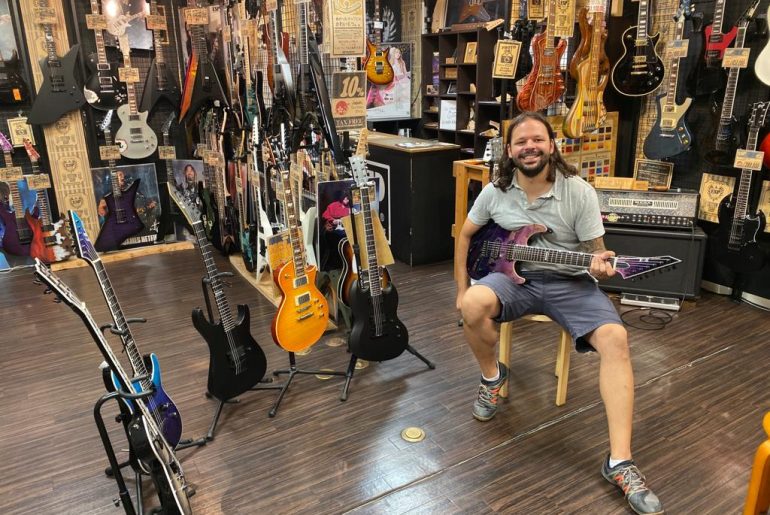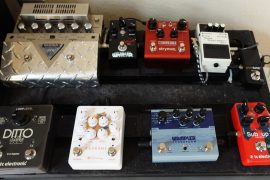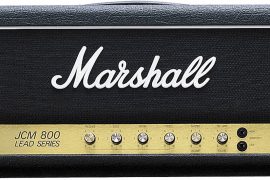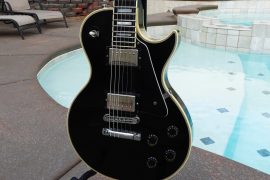Nearly three years ago to the day, in the Fall of 2019, I had the opportunity to go with my friends on a guys’ trip to Japan. We were celebrating the recent business success of my good friend Devin and ended up having one of the greatest weeks of my life. Little did we know that the entire world would begin to shut down only a few months later due to the COVID-19 pandemic. This was my first, and so far only, trip to Asia. My wife Jessica gave me the thumbs up to purchase a guitar while I was there, and what I brought home from that trip will be with me for the rest of my days.
My History with ESP Guitars
I was a high school student in the mid-1990s, and during this time, I became a big fan of the band Metallica. I’d been serious about the guitar since the beginning of my freshman year, and once I found out that James Hetfield and Kirk Hammett from Metallica both played ESP guitars from Japan, I set my sights on someday owning one.
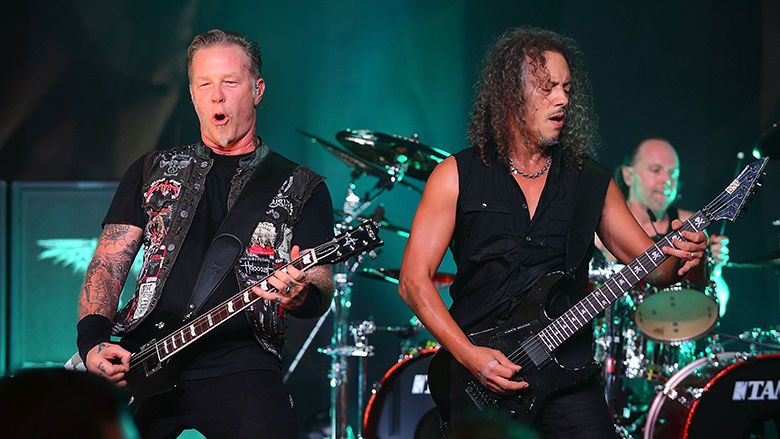
It took me several years to purchase my first ESP guitar. Before that, I mostly played my 1980 Gibson Les Paul Custom and my 1998 Paul Reed Smith McCarty. Fast forward to the economic downturn in 2008. Like most tax-paying Americans, I received an “economic stimulus” check from the government that year. I decided to spend the money on a new guitar. After all, it was meant to stimulate the economy, and I was already working full-time, so buying a new guitar seemed like the way to go.
After doing a fair amount of research, I decided to purchase an LTD JH-600. LTD is the more affordable line of ESP guitars. These days, most LTD guitars are made in Indonesia, but at that time, they were made in South Korea. In my opinion, this was the golden age of LTD guitars.
The JH-600 is the LTD version of late Slayer guitarist Jeff Hanneman’s signature ESP model. It’s a 24-fret super-strat with jumbo frets, an ebony fingerboard, and a Kahler tremolo system. This was my introduction to Kahler bridges; I have to admit, I really like them. I read some interviews with Hanneman and his fellow Slayer guitarist, Kerry King, where they talked about how the Kahler tremolo was a better and more versatile design compared to a Floyd Rose.
The cam design on the Kahler requires less effort to manipulate the bar (compared to a Floyd), and you can easily go up or down in pitch. Plus, you don’t have to cut off the ball ends of your guitar strings as you do on a Floyd Rose. I instantly fell in love with the guitar and played it primarily for several years before gifting it to my nephew for his 21st birthday. To this day (nearly seven years later), that guitar is still his number one!

Replacing my LTD JH-600
It didn’t take very long after gifting my JH-600 to my nephew that I started feeling a void in my guitar collection. That was my only super strat, my only guitar with 24 frets, and based on how into technique and shredding I was getting into at the time, I felt like I had no choice but to replace it with something similar.
Rather than purchase another LTD guitar, I felt like I had earned the right to finally purchase my first actual ESP guitar. I searched Reverb.com for a while and ended up finding a beautiful transparent green 1996 ESP Horizon NT. The Horizon is their carved-top super-strat model, and they still make it to this day. The NT part stands for “non-tremolo,” meaning it’s a hard-tail guitar.
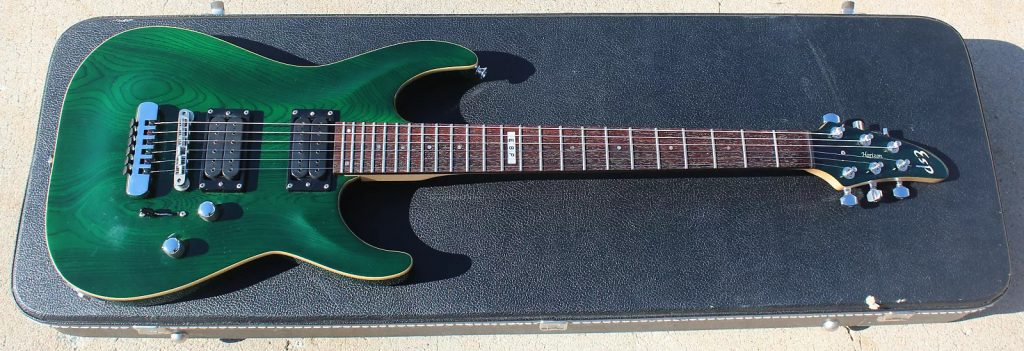
This Horizon model had an aftermarket set of DiMarzio Steve Vai Evolution pickups, which were wired up to a 5-way switch. I’m guessing that the fine-tuner tailpiece is not original, although I love the feel of it for palm muting and the accuracy I can get with the fine tuners. Another unique thing about this guitar is that it features a bolt-on neck. All of the newer Horizon’s feature a set neck, but I love the snappy feel you get from a bolt-on neck. Compared with either of the split coil positions, this makes for a very convincing Fender type of voicing.
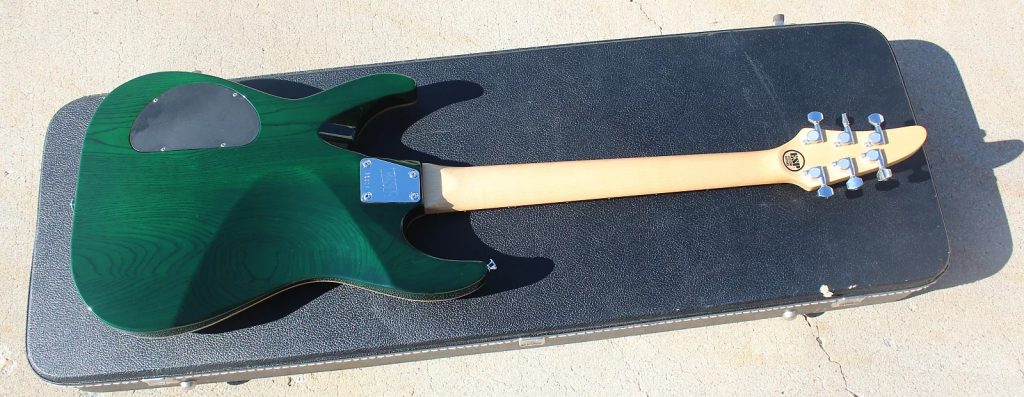
Although my Horizon doesn’t contain a Kahler tremolo system, I still feel like it was a nice replacement for my LTD JH-600. The funny thing is, due to the modifications made to the guitar, I ended up purchasing the ESP Horizon for less than I spent on the LTD JH-600! The guitar market is very similar to the car market; any aftermarket ‘upgrades’ end up lowering its overall value. This was great for me, though, because I knew what kind of quality I was getting with an actual made-in-Japan ESP guitar. Consequently, this is the only guitar in my collection that I purchased sight unseen.
I find it to be a more versatile instrument compared to my JH-600. The JH-600 was a metal machine but not so great for any other type of music. That’s not the case with my Horizon; I can do metal, fusion, classic rock, or even blues on this thing without feeling out of place. The variety of tones and the quality of the split-coil sounds I get from the Evolution pickups are outstanding.
Guitar Shopping in Tokyo, Japan
Now that you know my history with ESP guitars, it probably makes more sense why I was dead-set on purchasing one during our ‘Japantourage’ trip. It had been a few years since my last guitar purchase, so I was starting to feel the itch. I think I also justified it because the Japan trip was less than a year from my 40th birthday.
For me, part of guitar shopping is doing research. I’ll be the first to admit that I often overdo it with the research, only to fall in love with something unexpected at a store and end up going home that instead of whatever my research had produced. In the months leading up to the Japan trip, I was spending time nearly every day looking at different guitars for sale in Japan. During this research phase, I first learned about Tokyo’s “Guitar Street.”
Tokyo was the last city in our one-week tour of Japan. We started in Osaka, then spent a couple of days in Kyoto before arriving in Tokyo. I had my guitar shopping day all picked out. My buddies joined me, and we all took the subway to the Ochanomizu exit. After a quick lunch, we all headed down to Guitar Street.
It felt like paradise as a guitar player or even as a musician in general. Practically every store you walked by had a window showcase filled with guitars. Stores aren’t very wide there due to such tight space constraints, so they all build upward. This meant that nearly every store we entered featured multiple levels of guitars, basses, amplifiers, and effects pedals to play with. Some of the stores featured other types of instruments, like pianos and different types of brass horns, but I was solely focused on the guitar shops.
I remember there was a store called Big Boss that had an incredible selection of Japanese-made guitars. If you’ve never played a Japanese-made guitar, you really owe it to yourself to check one out. The craftsmanship and attention to detail are second to none. I knew that I couldn’t go wrong with any MIJ guitar, and I’m sure I would have been perfectly happy with something made by Yamaha or Ibanez, but I had too much history and nostalgia with ESP to seriously consider anything else.
ESP Guitar Workshop Tokyo
We walked around Guitar Street for a while and checked out a few shops. I even stopped to play a couple of guitars, but I knew there was no way I would be making a purchase without at least visiting the ESP Guitar Workshop. The time I spent there was something I will never forget; it was probably the greatest “kid in a candy store” moment of my life. Considering how much time I spend on ESPGuitars.com, it was completely insane to me being surrounded by all the guitars I’m normally researching on the computer.
After checking out the ESP store for a few minutes, most of our friends decided to separate and head back to Akihabara, which is Tokyo’s famous electronics shopping district. Luckily my good buddy Devin stuck with me as I started testing out various guitars. We went upstairs, where all the good stuff was and found an awesome salesman named Hoshi, who would become a memorable figure from the trip.
I knew I wanted to buy something from the new E-II line, but I had no idea which one it would be. If you’re not familiar with the E-II guitars, ESP added this to their lineup about five or six years ago. From that point forward, all of the standard ESP models coming out of the Japanese factory would have the E-II brand on the headstock, and only the custom shop models would continue to say ESP on the headstock. I don’t necessarily think that was the greatest branding move by ESP, but I knew what kind of quality I was getting out of a MIJ guitar, and plus, my Horizon has “ESP” on the headstock.

After seeing all these incredible guitars to choose from, I knew I was going to find something. I told Hoshi that I was definitely going to purchase a guitar that day but that I didn’t know which one. He was so cool, and communication was hardly a problem even though we didn’t speak the same language. He told me to pick out every guitar I liked and set it on a stand for him to tune up. Once they were ready to go, he set them near me for testing.
Hoshi set me up with a Mesa Boogie Dual Rectifier and told me to make as much noise as I wanted. Devin stayed with me the whole time, filming me as I tested various guitars. I must have tried out 15 guitars, then narrowed it down to three. After playing those three again, it was clear to me that the M-II 7 NT was the winner. I didn’t have a seven-string guitar in my collection and couldn’t get over how good it felt in my hands. Based on how much I loved my Horizon NT, I knew that a non-tremolo 24-fret super-strat was something that I liked, and the purple fade on the guitar was absolutely gorgeous!
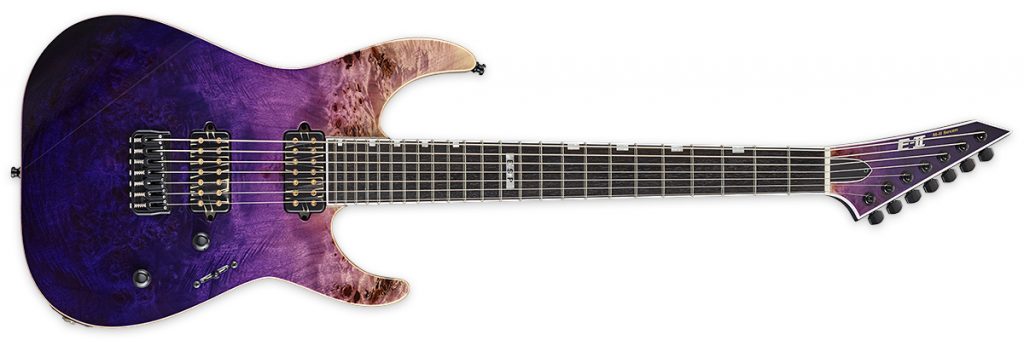
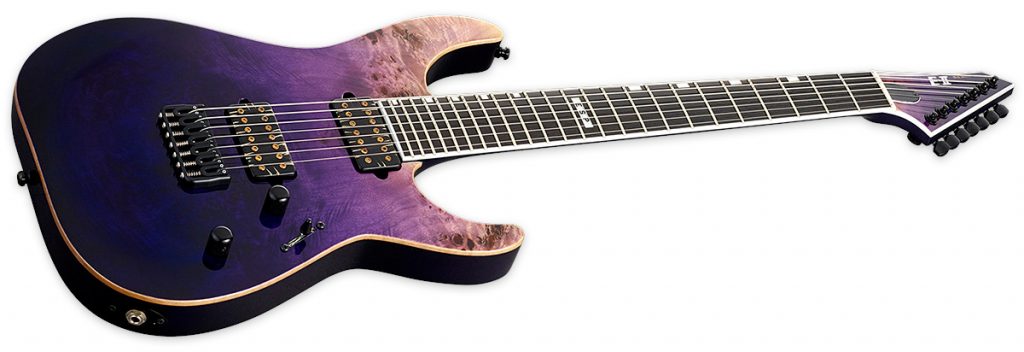
The whole experience of being at the ESP store with Devin, and all the friendly help we were getting from Hoshi, was unforgettable. I ended up meeting another guy who worked there while paying for the guitar, and he couldn’t have been nicer as well. I think they could tell how special the experience was for me, so they gave me a bunch of free ESP stickers, plus their business cards.

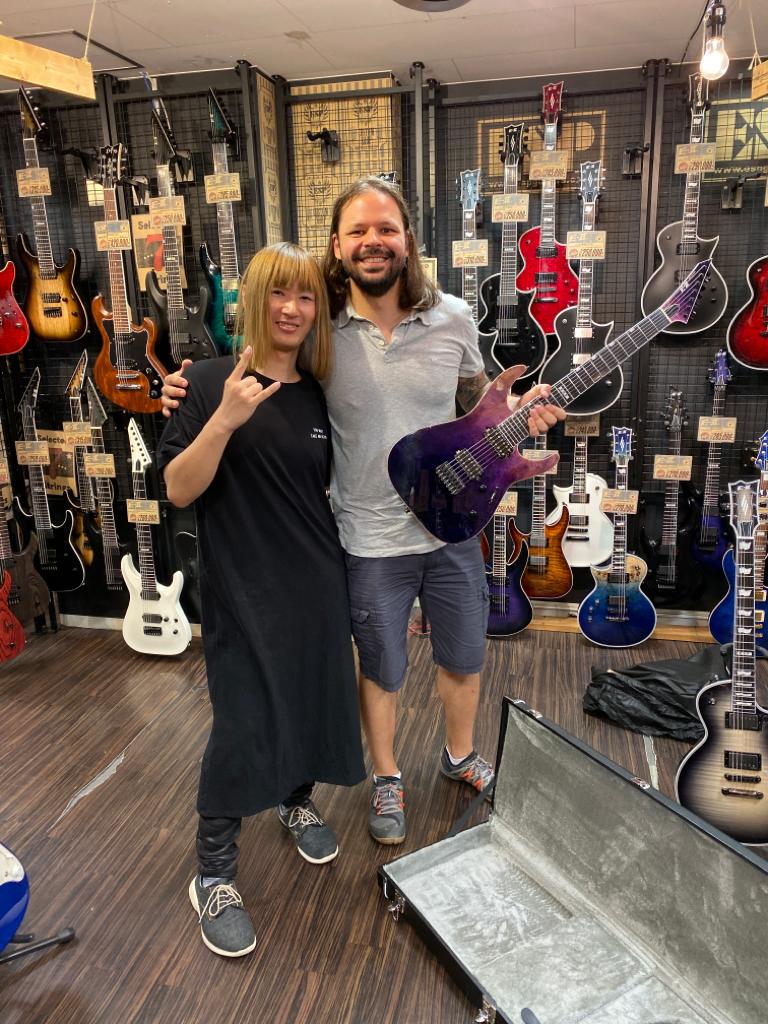


Summary
Going guitar shopping in Tokyo was something I will never forget. I was already a big ESP fan before this experience, but getting to visit their Tokyo Guitar Workshop and buying a guitar there took it to another level for me. It’s been three years since this experience, but I still play that guitar regularly. More often than not, when someone comes to my house and sees all the guitars on my office walls, they point out the purple seven-string as their favorite.
It really is a beautiful instrument, plus it’s so comfortable to play. I love the hipshot hardtail bridge and the Bareknuckle Warpig pickups. I highly recommend trying them out if you’re considering an ESP guitar. The quality and craftsmanship are excellent, yet they are still a great value for the money. Something of this quality made in the U.S.A. would most likely cost about double, but you certainly wouldn’t be getting twice as good of a guitar. That’s simply not possible when comparing to a Japanese-made ESP.

